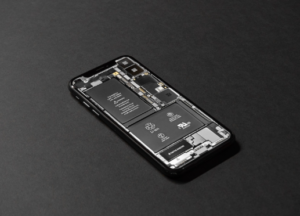
What You Need to Know About the New EU Regulations: A Brief Summary
The recently enacted EU Battery Regulation, effective August 17, 2023, delivers a comprehensive framework of guidelines aimed at enhancing the sustainability, circularity, and safety of batteries. It applies universally to all batteries available on the EU market, regardless of their origin.
This regulation is centered on four primary objectives:
- Mitigating the environmental and societal impacts associated with batteries across their entire life cycle. This entails establishing targets for carbon footprint reduction, minimizing the use of harmful substances, and increasing the utilization of recycled materials.
- To Foster a circular economy for batteries by necessitating manufacturers to collect and recycle used batteries while ensuring accessible battery collection points for consumers.
- Enhance the efficiency of the internal battery market within the EU through the standardization of requirements and standards.
- Make batteries removable in as many product categories as possible. Products like smartphones should be built in such a way that even the layman can easily replace its battery. Products such as laptops, smartphones, EVs, e-bikes, tablets, etc. will be affected.
Furthermore, the regulation introduces additional safety prerequisites to guarantee the safe handling, transportation, and non-hazardous nature of batteries, prioritizing human health and environmental protection. The EU Battery Regulation represents a substantial stride in the EU’s quest for a more sustainable and circular economy, simultaneously bolstering the EU’s competitive standing in the global battery sector.
Key elements of the regulation encompass:
- Sustainability targets, such as the requirement that new portable batteries in the EU contain a minimum of 12% recycled cobalt, 4% recycled nickel, and 4% recycled lithium by 2030.
- Circular economy mandates, including manufacturer responsibilities for collecting and recycling used batteries, with the aim of achieving a 70% collection and recycling rate for portable batteries by 2030.
- Safety measures, such as the implementation of a battery passport for all new batteries marketed in the EU, containing vital information about battery composition, performance, and safety.
While the EU Battery Regulation is intricate, its a significant advancement in the EU’s pursuit of a more sustainable and circular economic model.
Impact of the New Regulation on Smartphones and Other Devices
The new EU Battery Regulation is going to have a lot more impact than its universal charging regulation did. First, the new regulation is going to impact the way manufacturers design and assemble products and devices such as smartphones, laptops, EVs, etc.
But let’s focus on smartphones. The new regulation is going to potentially force smartphone manufacturers to regress from the sleek and thin designs we’ve all become used to over the past few years. This is because the new law basically forbids adhesive from being used to glue phone backs. Also, glass backs are now a standard feature on many phone series. So figuring out how to make something as fragile as glass easily removable by the layman without it being damaged isn’t an easy task.
So, the new law potentially requires smartphone manufacturers to develop new ways of putting phones together. This will be necessary if they want their devices to comply with the new law while still keeping up with design.
There’s a rumor that by making batteries removable, we’d be giving up on having IP68/IP67 (waterproof/water resistant) on our devices. That is, unless manufacturers can somehow come up with a new design or approach. However, this is not true. It’s totally possible for a phone’s battery to be removable while still being IP68/IP67 rated. How do I know this? Because it has been done before. The Galaxy S5 and the Sony XP10 are good examples of this.
Will removable batteries add some complications to waterproofing smartphones? Most likely, yes. Will it make it impossible? No.
Impact Of The New Battery Regulation On Consumers
As for us, the consumers, the new laws affect us quite positively. Now, it will be easy for daily users to pop open our smartphones and replace the batteries whenever they have issues. Who knows, we could even revert to the old ways of carrying multiple batteries around for our smartphones.
The new regulations also require manufacturers to make genuine battery replacements easily and readily available. Smartphones becoming more bulkier due to removable batteries is a price I’m sure many won’t mind paying.
Now for the big question.
Is this move really necessary?
Let’s look at this new regulation from the lens of a smartphone user who just wants the best possible experience. You might argue that it’s a good move but not a necessary one. There’s nothing inherently wrong with sealed batteries on smartphones. But when you look at the bigger picture, you start to see the “right to repair” perspective and the environmental aspect of it. So whether it’s necessary or not is up to how you see things like Right to repair, environmental protection etc.
Let us know if you think the move is necessary or not in the comments below.







